#grad ramblings
Note
h-how do you ever finish any of your work? genuine question because you seem to be productive despite your agreste syndrome and I need to learn your ways. but also how do you ever finish any of your work
unclear. last night i stayed up and finished a report worth 25% of my grade at about 5am, arrived on time for my 9am lecture, and spent about half of it zoned out while thinking about seventeen year old emilie agreste. and i was one of the most active participants in the class discussion
#in some ways it IS the move to go to grad school right out of undergrad#because your body can still sort of operate like a college kid#i’m on about 3ish hours of sleep rn and this morning it felt SO over but now i’ve eaten something and we’re so back#i also don’t really do caffeine. except sometimes i’ll go get one of those panera death lemonades#i might be able to snag a short nap before work#but anyway about seventeen year old emilie. i was thinking abt how she was in that movie solitude and adrien said she was seventeen#WAIT. NO. HE SAID SHE WAS SEVENTEEN IN THAT PHOTO ON HIS DESKTOP NOT IN THE MOVIE#well. okay whatever i’m gonna tell you what i was thinking about anyway#OKAY i’m back i just checked the wikipedia page and then i watched the end of gorizilla. to make sure i’m not lying. because i’m normal.#anyway i was thinking about the solitude film and how it’s super rare and old and obscure and whatever. and how apparently#emilie wrote it herself and andre produced it#and i’m thinking about how gabe was discovered by audrey and that’s how he got his start in the fashion industry#so now i’m like?? did gabe and emilie first meet on the set of solitude? because gabe was designing costumes or whatever?#and that’s how audrey found him? have people already thought about this??#also i just checked and it doesn’t say emilie’s last name in the credits and also it’s ‘graham films’ with the twin rings logo m#so i’m assuming she’s still emilie graham de vanily at that point#anyway it comes back to seventeen year old emilie because i started imagining seventeen year old runaway emilie having her new life in pari#after escaping her british nobility life#and the first thing she does is write and star in an original movie. of course.#and she meets this repressed bisexual punk upstart costume designer who is so the opposite of everyone she’s ever known#and he’s immediately so unhealthily obsessed with her. which she appreciates.#and then they proceed to have the most toxic doomed evil relationship of all time#also she gets cheated because once gabe gets money he represses himself SO hard that he is now exactly like all the people emilie grew up w#but at least he’s still obsessed with her#this is what i was thinking about during class today. i don’t know how i get anything done either.#ml#anna rambles#asks
110 notes
·
View notes
Text
I've spent so much of the last few months reading all these books and essays and such about asexuality (and about aromanticism when I can fucking find them) by aspec people for my master's and it's been such a lovely experience but also. idk shit's weird man. like you take even a cursory look at the literature and discussions and there's such a wealth of new and interesting and nuanced perspectives on consent and rethinking the way we talk about sexual trauma and the insitution of marriage and discrimination against single people and the institution of psychiatry and the limits of modern discourses of gender and sexuality and relationship anarchy and capitalism and reproductive rights and culture and history and narrative structure and feminism and how all of it is influenced by race and gender and disability and culture and it's WONDERFUL but also. every single time I read something like angela chen's ace or sherronda j brown's refusing compulsory sexuality I can't help but wonder about how much we've missed out on. how much interesting thought and discussion and new ideas have we missed out on because of all the years these communities lost to the fucking "ace discourse". how many important conversations could we have had sooner if a small number of entirely disingenuous bad actors and a larger number of the most useful idiots on the planet hadn't declared it open season on an entire subsection of the queer community because they wanted an excuse to bully 16 year olds online. how much more could we already understand.
119 notes
·
View notes
Text
Liebstes Deutsches Ding(TM): Abkürzungen oder Akronyme, die auf den ersten Blick unnötig umständlich oder kontra-intuitiv scheinen, bis man merkt, dass man mit der "sinnvolleren" Variante unausweichlich bei "SS" oder "SA" landet.
#case in point:#sachsen being sn#sachsen anhalt being st#staatsanwaltschaft being sta#german#german stuff#deutsches zeug#kaj rambles#hab grad kurz gegrübelt warum die staatsanwaltschaft so 'umständlich' abgekürzt wird und war dann so... ja okay 'sa' ist suboptimal#edit because my sibling reminded me of it: wintersemester als ws vs sommersemester als sose...
1K notes
·
View notes
Text
What Kind of Plants to Add
This is my sixth post in a series I’ll be making on how to increase biodiversity on a budget! I’m not an expert–just an enthusiast–but I hope something you find here helps!
I’d love to be able to give a quick and easy list of things to add, but frankly I can’t do that. I can strongly encourage you, however, to look at these categories of plants and do further research to discover what’s native to your area, so you can plant things that’ll have the most impact in your particular area.
With that being said, I will mention a few plants as examples. This is in no way, shape, or form me telling you that you have to or even should buy these specific plants. Not every plant works well in every place in every garden, not to even mention across countries. Above all, if you’re wondering what plants you should be adding, I can wholeheartedly say plants that are native to your area--or at least nonnative non-invasive.
Flowers
Flowers are some of the most common ways people work to increase biodiversity in their gardens, and who can blame them? Seeing pops of color out your window, and directly seeing the impact via butterflies and bees visiting the garden? It’s a win-win for us and the wildlife!
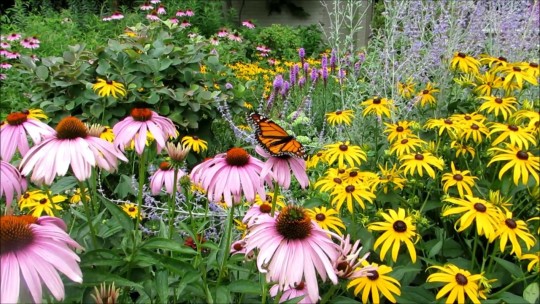
Flowers--especially native wildflowers--are a quick, easy, and cheap way to increase wildlife traffic in your garden. Perennial gardens are more likely to get you the most bang for your buck, as they’ll come back year after year if you treat them well. But don’t dismiss annuals--if you get ones that easily reseed, they’ll eagerly return on their own! If you can, do your best to ensure that the flowers you plant all have different blooming periods--that way, your garden can support wildlife throughout the year instead of for just one brief season.
Flowers are environmental super boosters. Their nectar and pollen can feed insects and birds, their stems and leaves can provide nesting materials for all sorts of creatures, and their seeds are a popular food source among birds at all times of the year.
Climbing Plants
Climbing plants can be fantastic options for maximizing your impact. If you have limited ground space, growing up can provide interest as well as additional habitat for all kinds of creatures.
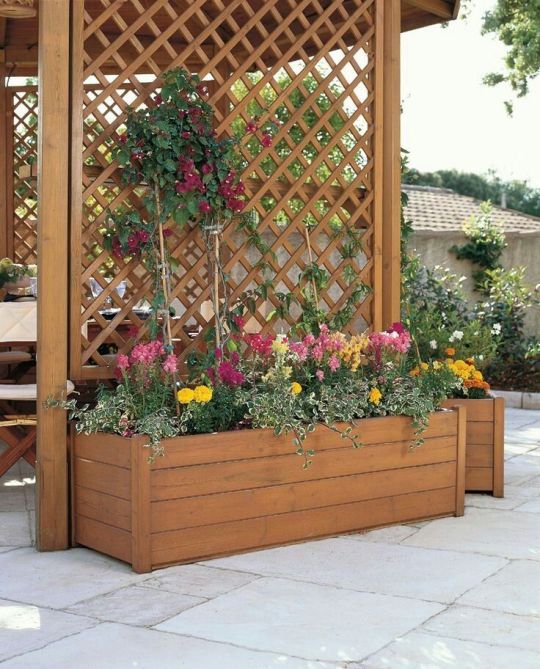
Training plants up a trellis, fence, or bare wall offers food, shelter, and habitat. Trumpet vines, passionflowers, honeysuckles, and more will provide sweet nectar for pollinators as well as nesting and hiding spaces for other wildlife like birds, bugs, and lizards. Do note that in some cases, climbing plants can actually affect the structural integrity of walls and roofs if allowed to climb too much and too far along a house, so be careful.
Bushes/Shrubs
Bushes provide shelter for creatures, which then provides hunting grounds for other animals. Their fallen leaves and petals can be food and shelter for detritivores, amphibians, reptiles, and small mammals--and they also provide good cover for moving around the garden, for creatures who like to stay hidden. They can be a bit more pricey to obtain--unless you get cuttings or seeds and are willing to wait--but they’ll definitely be worth it, and they’re typically low-maintenance once they’re established.
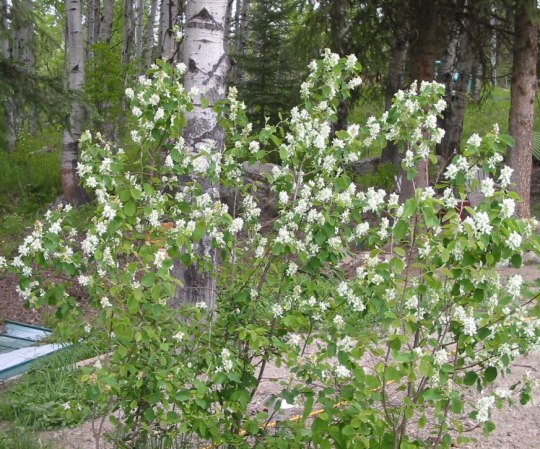
Bonus points if you get a flowering and fruiting bush, like bottlebrush, serviceberry, lilac, or others. This’ll make your bushes not only a place of shelter, but a food source as well--and depending on the kind you pick, may be food for you too! Making a garden border with a series of bushes can be a great option to providing lots of habitat, if you can manage it.
Shrubs with pithy or hollow stems are excellent options for supporting solitary bees. Some examples you could look into are elderberry, raspberry, blackberry, or sumac.
Trees
Trees have a high up-front cost and take awhile to grow, but once they’re settled in place they provide crucial habitat to all kinds of creatures! Insects will be attracted to flowers they may provide, or to nest in the wood. Others may eat the leaves as food, or use them as nesting materials. Birds will perch and nest in trees, and feed off the fruits and seeds and insects that also use the tree. Squirrels also use trees as nesting places, piling up dead leaves into huge clusters to raise their young in, and will absolutely feast on any nuts the tree may provide. Mice, badgers, and more will feast on fallen fruits or seeds, and bats roost in the trunks when given the chance. Detritivores eat fallen leaves and decomposing fruits, providing further food for hunting creatures. Trees can also be good for us--they help block out noise and air pollution, and are the poster child for taking CO2 and making it breathable oxygen. Not to mention they can provide plenty of food for us, too. Nesting grounds, hunting grounds, shelter from weather, and more--trees are, in my opinion, likely to be the best way to boost biodiversity long-term. If you can get your hands on a sapling for cheap and can care for it for awhile, I’d definitely give it a shot! Make sure the tree won’t get too big for where you’re growing it, though--you’ve definitely gotta plan for the long-term before you plant any.
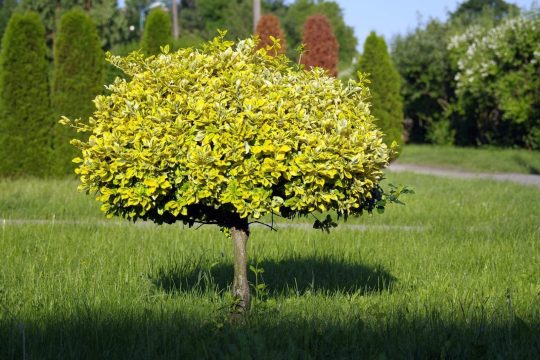
Some trees can be grown in containers. Though they won’t become gigantic branching behemoths, they’ll still do their part to support all the life that depends on them. Growing a tree from seed may take awhile, but could be an easy option to getting one if you have the patience--the trees are more than happy to help you, as they drop tons of seeds and fruit in fall for you to gather.
Groundcover
Bare soil is the enemy of microbial life in the soil, and while small pockets of bare soil can be great nesting places for bees and other insects, having swaths of empty soil should be avoided. Groundcover plants grow low to the ground in a sprawling habit, and will often spread quite easily on their own. This is a great way to provide shelter, keep soil temperatures cool, block out weeds, and give your soil life a chance to thrive.

Sometimes, ground covers don’t even have to be planted in the ground. Shallow-rooted plants like succulents, ferns, and alyssum can be planted into cracks in stone walls, and moss can be planted by making moss graffiti and painting it onto a surface. As with climbing plants, do make sure that you don’t cause extra damage to important walls and housing foundations.
Host Plants
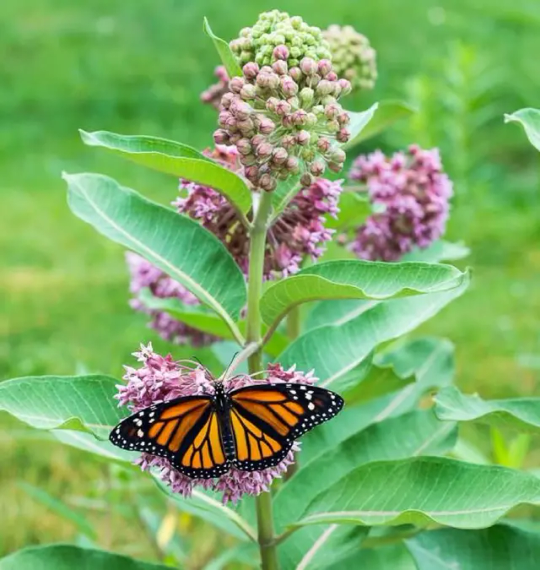
Host plants get their own section, because plants of all kinds can be host plants for different creatures! It’s common to think only flowers can be host plants in the beginning, but in reality, many bushes and trees are host plants to dozens of species of butterflies and moths. Honestly, I feel that factor's not talked about enough. Look up what insects live in your area and what kind of host plants they need, and plant some if you can! Bonus points if you can plant a variety of them--I know that there’s hundreds of kinds of milkweed, each one flowering and leafing up around different times of the year. Planting several varieties of milkweed, then, would provide monarchs with food through several seasons, allowing many more of them to grow up in your garden!
Nectar Plants
Plants that provide nectar to insects is a great foundation to increasing biodiversity! This is, of course, many native wildflowers (and even nonnative wildflowers, though be sure they aren’t invasives who’ll do more harm than good), but many native bushes, vines, and trees will also provide nectar to hungry pollinators!
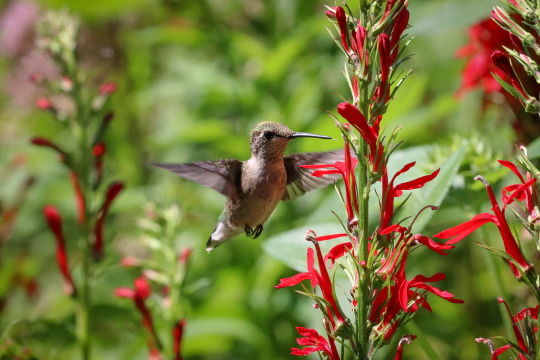
Keystone Species
To be frank, some plants can have a bigger impact than others in a landscape. By all means, every bit helps, but if you want to boost biodiversity quickly there are a few plants that can essentially serve as the backbone of local ecosystems that you can grow in anything from a balcony pot to a small patch of your backyard. These plants can be different depending on where you are, so do your research to find out what would be best to grow in your area. If you can’t get them all? That’s alright! But even hitting just a few of these target species really can do a lot.
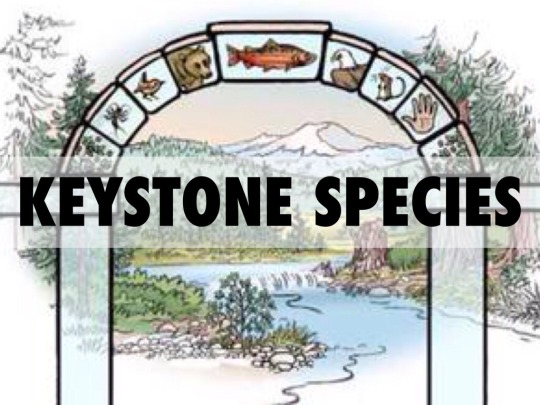
That’s the end of this post! My next post is gonna be about things to keep in mind/continue to do once you get plants in the ground! Until then, I hope this advice was helpful! Feel free to reply with any questions, your success stories, or anything you think I may have forgotten to add in!
#biodiversity#solarpunk#gardening#outdoor gardening#ani rambles#out of queue#the biodiversity saga#sorry its been 2 months since I last posted to this series#I literally have everything drafted out I just got Busy because maannnnnnn animating a grad school capstone project all by yourself....#i should really start using my youtube channel to post my animations but they never feel Done so I just Dont#i dont have as many links in this one because... they weren't in the draft and any tumblr posts that came to mind I couldn't hunt down#either way i hope this was Helpful and Lit and All That Jazz#I might just post the other parts tomorrow so I can stop having that hanging over my head#and so I can get my sources masterpost out there so people can like. see I'm trying my best not to just talk out of my ass#anyways see yall
157 notes
·
View notes
Text
me slow blinking at my mutuals as a sign of my love and trust and affection
71 notes
·
View notes
Text
“Publish or perish” ok then fine I do not choose publish
246 notes
·
View notes
Text
Constant need to throw Hornblower into math academia and discover new flavors of how unwell he can get
#the 19th c royal navy/21st c academia parallels are real#he belongs in math academia and also it would make him completely deranged#like consider. sawyer as toxic advisor trying to ice out his grad students#hornblower not having patronage (not coming from an illustrious enough academic pedigree <- happened to a guy i know)#eventually he gets a good job somewhere because he's ridiculously smart and just had bad luck (unrealistic but like the books)#except he can't be happy about it because he has so many years of built-in impostor syndrome and general rat-race toxicity#the worst thing is that he'd care about this so so much more than he did about his naval career and i think it would break him#perce rambles#hornblower#also i need to send him to my undergrad. he belongs there and also it would be guaranteed to make him worse#school where no one understands the concept of self care and everyone is unbelievably neurodivergent#also all of the pure math people are exactly like him (affectionate/deeply concerned)
31 notes
·
View notes
Text
I saw someone say Between Us is not a plot based show - it’s character based. And yes, 1000%
But more than that, it’s not a plot based show it’s a character driven behind the scenes look at Win and Team from UWMA. These two stories are interconnected (obviously) in a way that makes the plot exist heavily in UWMA and (for WinTeam) the character driven story and growth occur in Between Us.
UWMA is happening in the background, but Win and Team exist outside of that story and Between Us is that existence; that secondary space.
Their love story is (in some ways) messier than Pharm and Dean because fate isn’t involved - Win and Team have no deep previous connection. They hooked up on a swim trip and the next thing they knew Team had a safe place and Win had found the first person who was reluctant to take what he’d give AND willing to give in return.
Between Us is like the best of the fanfic world. It’s taking two beloved characters and giving them life behind the camera, in the spaces we haven’t really seen before. It doesn’t need the corny troupes or the redundant plot points that always exist in dramas (though it has some) because the world these characters live in has already done that.
#between us#between us the series#winteam#uwma team#teamwin#bounprem#Hemp Rope#more morning rambles#I AM great at my job huh? oh adulthood…and I thought grad school was the worst#well at least less is expected of me now I suppose 🙃
311 notes
·
View notes
Text
I am so close to graduating it is knocking my socks off
#one semester??? Huhwuh???#but also can it please come faster. I am begging#hehe and then I’ll go to GRAD SCHOOL#Evan rambles
26 notes
·
View notes
Note
it's been an honor watching your journey from femboy in denial to trans girl who reblogs horny posts with nonhorny disclaimers. soon you will complete your metamorphosis and reblog horny posts unironically, without disclaimer, in full endorsement
Eh
The femboy stage was less denial, and more "taking advantage of a current trend to make one last ditch effort at trying to be happy without transitioning"
But also uuuuhhhhhhhhhhh hhhmmm....
#imma be honest#i would probably be doing OF if it werent for this pesky thing called “my primary career”#def heard stories of grad students getting into nasty situations bc they posted apicy pics online#shit it kind of already happened to me#im rambling#but im always gonna be just a tad restrained bc of that
35 notes
·
View notes
Text
Over the years, I've heard lots of stories about people being upset about other people not attending their graduation ceremonies, and I'm so fucking confused, because it's like. such a nonfactor of an event to me. I told my family that if they wanted to attend my uni graduation ceremony, they were welcome to, but don't look for me, cuz there is no way I'm attending.
So idk I guess I'm just curious how the opinions range. I figure I'm in the minority (I am based off irl exchanges, that's for sure), but that doesn't change that I wanna see the results!
#flame polls#graduation#school#unfortunately i did attend my high school grad ceremony and i had a miserable miserable time of it#i didn't feel like i had enough autonomy to say no to my family because i still lived at home and was still 'a kid' to them and stuff#but as soon as that ceremony was over i told my mom that nothing would get me to attend my uni grad ceremony because fuck ALL of that#and i stood my ground that time#rambling
130 notes
·
View notes
Text
at the panera bread purchasing lethal amounts of caffeine
#this grad degree is sponsored by panera bread charged lemonade#okay i’m turning off my tumblr brain and opening my textbook. i promise#anna rambles
104 notes
·
View notes
Text
Aromanticism in Academia
Since it's currently Aromantic Spectrum Awareness Week and I'm currently in the middle of a master's research project about aromanticism and asexuality, I figured I'd contribute by putting together a list of some books and other academic sources I've read so far that deal with aromanticism! There's very little written about aromanticism in academia, so I think it's important to spotlight what we do have.
DISCLAIMER BEFORE THE LIST: Due to the lack of discussion of aromanticism specifically in academia, most of what I've found are texts that are primarily about asexuality but also discuss aromanticism. It's unfortunate, but it is also where we're kind of at right now in terms of academia, so bear that in mind.
Books:
Ace Voices: What it means to be asexual, aromantic, demi, or grey-ace by Eris Young - Definitely has the most focus on aromanticism of everything that I've read so far, this book draws from a combination of the author's personal experiences and interviews with other members of the a-spec community, including aroace and alloaro people. A good source of discussion of aro issues and how they interact with things like gender stereotypes. Also notable for its discussion of QPRs, a topic which I find has generally been ignored in academia about a-spec identities.
Ace: What Asexuality reveals about desire, society, and the meaning of sex by Angela Chen - Primarily deals with asexuality, as the title suggests, but also contains some relevant discussions of aromanticism, including the experiences of aroallo people. If you're going to check out the book, I would especially recommending looking at chapter 7: Romance, Reconsidered, which features most of the discussion of aromanticism and non-normative relationships
Refusing Compulsory Sexuality: A Black Asexual Lens on our Sex-Obsessed Culture by Sherronda J Brown - Again, asexuality is the main focus here, but I would still recommend checking out this book as it does still contain some useful discussion of aromanticism, particularly an extended critique of "singlism" (i.e. discrimination of single people) and how it is weaponised against aros. I also find Brown's criticism of the dehumanisation of aromanticism in media to be very compelling!
Minimizing Marriage: Marriage, Morality, and the Law - I would be remiss not to mention Brake's work here. While Minimizing Marriage is not specificallly about aromanticism and deals with marriage reform and the concept of amatonormativity more broadly, I think it's fair to say that many of Brake's ideas (particularly her coining of amatonormativity as a term) have become vital to the aro community and aro activism in recent years. Definitely a must-read for anyone interested in deconstructing amatonormativity and in contemporary critiques of marriage as an institution, though it's worth noting that this is a work of moral/political philosophy first and foremost, and as such it gets very into the weeds of things. Available on the Internet Archive here
Academic Articles/Essays (all can be found in the collection Asexualities: Feminist and Queer Perspectives):
"Why didn't you tell me that I love you?": Asexuality, Polymorphous Perversity, and the Liberation of the Cinematic Clown by Andrew Grossman - A really interesting and engaging analysis of the archetype of the silent film clown, and how it can be read as an a-spec figure. While Grossman uses the language of asexuality, his analysis makes it clear that he is looking at the clown as both an asexual AND aromantic character.
On the Racialization of Asexuality by Ianna Hawkins Owen - A personal favourite of mine. I think many parts of this essay will be very relevant to aromantic people, particularly Owen's investigation of how romantic love came to be pedastalised and her critique of attempts to normalise asexuality by distancing it from aromanticism.
Mismeasures of Asexual Desires by Jacinthe Flore - A critique of the pathologisation of asexuality that also discusses how aromanticism challenges common discourses around intimate relationships
Finally, I would like to mention the work of Bella DePaulo, who has written extensively about singlism and compulsory coupling, and who Brown uses extensively as a source in their writing on aromanticism. I didn't want to make this part of the main list because I haven't yet had a chance to get stuck into DePaulo's work, but based on Brown's mentions of her work I believe she has some very interesting ideas that are very relevant to aro people.
As you can probably tell, the list of academic sources dealing with aromanticism and aro issues is very limited. However, while aromanticism is vastly underdiscussed in an academic context, I'd like to point out that this is also only what I've been able to find so far. If anyone has any other recommendations please do add them to this post - I for one would love to hear about them!
#aro shtuff#asaw 2024#aromantic awareness week#asaw#aromantic spectrum awareness week#aromantic#ifer rambles#also if u guys have recommendations for aro academia it would be very helpful for me personally#so y'know. there's that#grad school tag
57 notes
·
View notes
Text
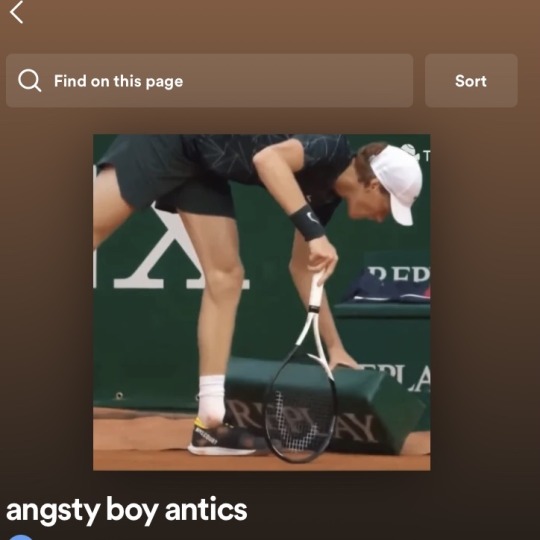
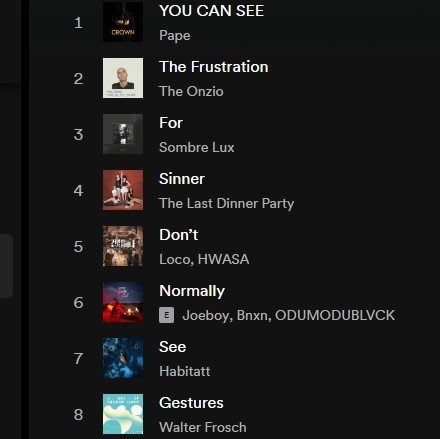
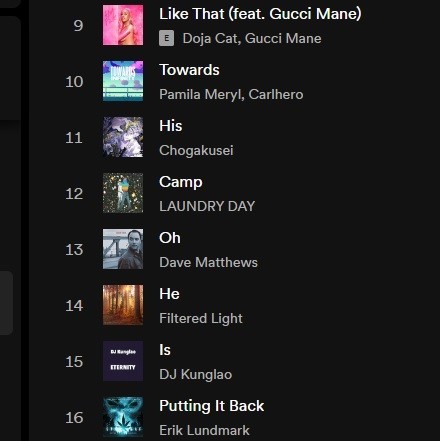
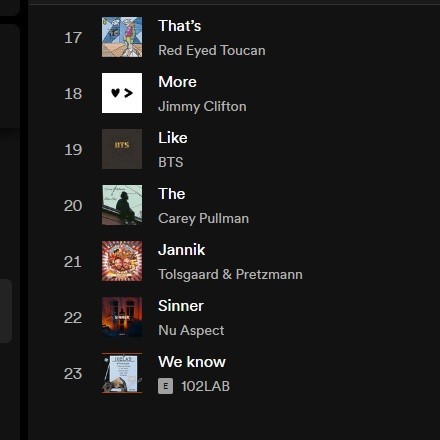
made another playlist, this time based on this video posted by @jean--valswan of jannik being an angsty boy
#i love that video#video of all time#this playlist has been a WIP for a long time but I finished it yesterday while avoiding grad school applications <3#also i had to make some edits so it's not exactly the right words for all of it#eg 'he is' instead of 'he's' and 'know' at the end because it's cut off in the video so i don't actually know what he said#and i don't have tennis tv to go back and check boooo#however! i did rewatch that set anyways and the visuals of two redheads both wearing green on red clay with green surroundings. beautiful#ALSO!! the fact that there’s a song called jannik. thrilled it saved my life#rambles#jannik sinner#uploads
24 notes
·
View notes
Text
It should not be close to 30°C in early April.
#there regularly used to be chance of snow in April#climate change#climate crisis#this is germany we should not have these temperatures right now#german stuff#für montag sind 29 grad angesagt.#kaj rambles
16 notes
·
View notes
Text
I have apparently decided to rewatch Prison Break, and after watching the first episode, I would like to say that first, I love Wentworth Miller. And second, it's so cool to think about all the planning he put into all of this. He researched the inmates and the prison doctor, along with others at the jail. He set things into motion before he even got arrested, like the John Abruzzi thing. Not to mention the huge, elaborate tattoo with the blueprints hidden it, plus the fact that his architecture firm ghost worked on the building.
It's so interesting and I'm excited to see more of the thought process behind it!
#ollie rambles#fun fact: while i watch im working on apllying to grad school to become a teacher!#prison break#wentworth miller#michael scofield#gonna start wearing my paper crane necklace#also remember when i used to live blog reading books?#i might do that again but with this show
24 notes
·
View notes